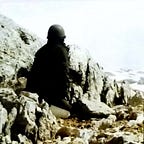Irredentism in the Levant… and Beyond
A short history of irredentism in twentieth-century Syria.
Syria’s territorial claims have deep roots in its history and cultural heritage, following the Umayyad dynasty's nostalgia and the defacto Kingdom of Syria (1918–1920) of Emir Faisal, Syria has consistently sought to reclaim the former Ottoman Empire territories. These claims have been made more or less vigorously depending on the targeted territories.
Syria’s spokesperson in Washington affirmed in 1946 that Syria, Lebanon, and Palestine had been separated by artificial borders since the Great War. Syria’s territorial claims continue to shape its foreign policy and relations with neighboring countries, and they remain a contentious issue in the region. On January 7, 1976, Khaddam, who was both the Syrian Vice Prime Minister and Minister of Foreign Affairs, declared that “Lebanon has always been a part of Syria, and we will integrate it back into Syria”.
Syria’s ambitions do not stop with Lebanon; they believe that Jordan and Palestine are also Syrian lands. This imperialistic desire is based on the Arab unity that Damascus claims to achieve. In June 1976, conversations were held between General Hafez el-Assad, Nayef Hawatmeh (the leader of the Democratic Front for the Liberation of Palestine), and Yasser Arafat. During these conversations, the Syrian head of state “mentioned Palestine as the southern part of Syria.” This interview is reported by Kamal Jumblatt: “You do not represent Palestine as much as we represent it ourselves. Do not forget one thing: there are no Palestinian people (…), there is Syria! (…). Palestine is an integral part of Syria”. Furthermore, in 1950, the Syrian press persists in designating Tripoli as “the Tripoli of al-Sham”. Sham is the Arabic name for Damascus in its broadest territorial sense.
Based on a nationalist conception that disregards the diversity of Arab countries, Syrians see themselves as representatives of the entire region. Even President Assad himself, in his historic speech on July 20, 1976, justified the intervention of his army in Lebanon by citing the “long-standing historical and fraternal ties between Syria and Lebanon”. A few days later, a Syrian general declared: “Syria and Lebanon have formed one people, one country throughout their history. Lebanon was created to isolate Damascus from the sea.”
On August 30, 1976, referring to the weight of history, an editorialist of the Syrian government organ Al-Thaoura, wrote on the eve of President Elias Sarkis’ visit to Damascus, that the two presidents “will examine the new links between Lebanon and its “Shaqiqa” [sister] Syria, those of these two countries with Jordan, as well as the links of these three countries with Palestine.” The newspaper suggests the creation of a federal state and wonders: “Why not form a federal army and ministries?”. This statement highlights a consistent aspect of Syrian politics, which is the persistent refusal to recognize the existence of an independent Lebanon, regardless of the regime in power. The dream of dominating Lebanon or even integrating it back into a “Greater Syria” has been a constant element of Syrian policy.
The Greater Syria project would like to gather the same territories under the authority of King Abdullah and crystallizes feelings of frustration and repressed appetites of a man to whom Baghdad had been promised, not Amman. One of the founders of the Baath Party, Salaheddine al-Bitar, who was more of a pan-Arabist militant than a pan-Syrian one, believed that “Lebanon, in its historical and geopolitical reality, is an integral part of the Arab world.” A Damascus government newspaper claimed Jordan as Syrian territory on the grounds that it was an artificial creation of British imperialism. “This land is Syrian. It is a part of natural Syria. Throughout history, it has never been recognized as having a separate identity or administration from Syria.”
In conclusion, the concept of Syrian irredentism in the Levant is driven by a combination of historical, cultural, and geopolitical factors. The idea of a “Greater Syria” or a “Fertile Crescent Empire” has been a persistent theme in Syrian politics, with a desire to expand its influence over neighboring territories. The Lebanese model of political pluralism governance is seen as a threat to this vision, leading to a desire to undermine and ultimately eliminate it. Despite the complex and multifaceted nature of this issue, it is clear that the tensions between Syria and Lebanon are deeply rooted and will require significant effort to overcome.
Bibliography:
Basbous, Laurent (1983)
Rabbath (1973)
Boustany (1978)
Chamoun (1963)
Saab (1968)
Peroncel-Hugoz (1984)
Rondot (1978)
